The Grönefeld 1941 Grönograaf, The First of Its Kind From the Dutch Brothers
Exemplary in form and function, this chronograph steals the show and hearts.
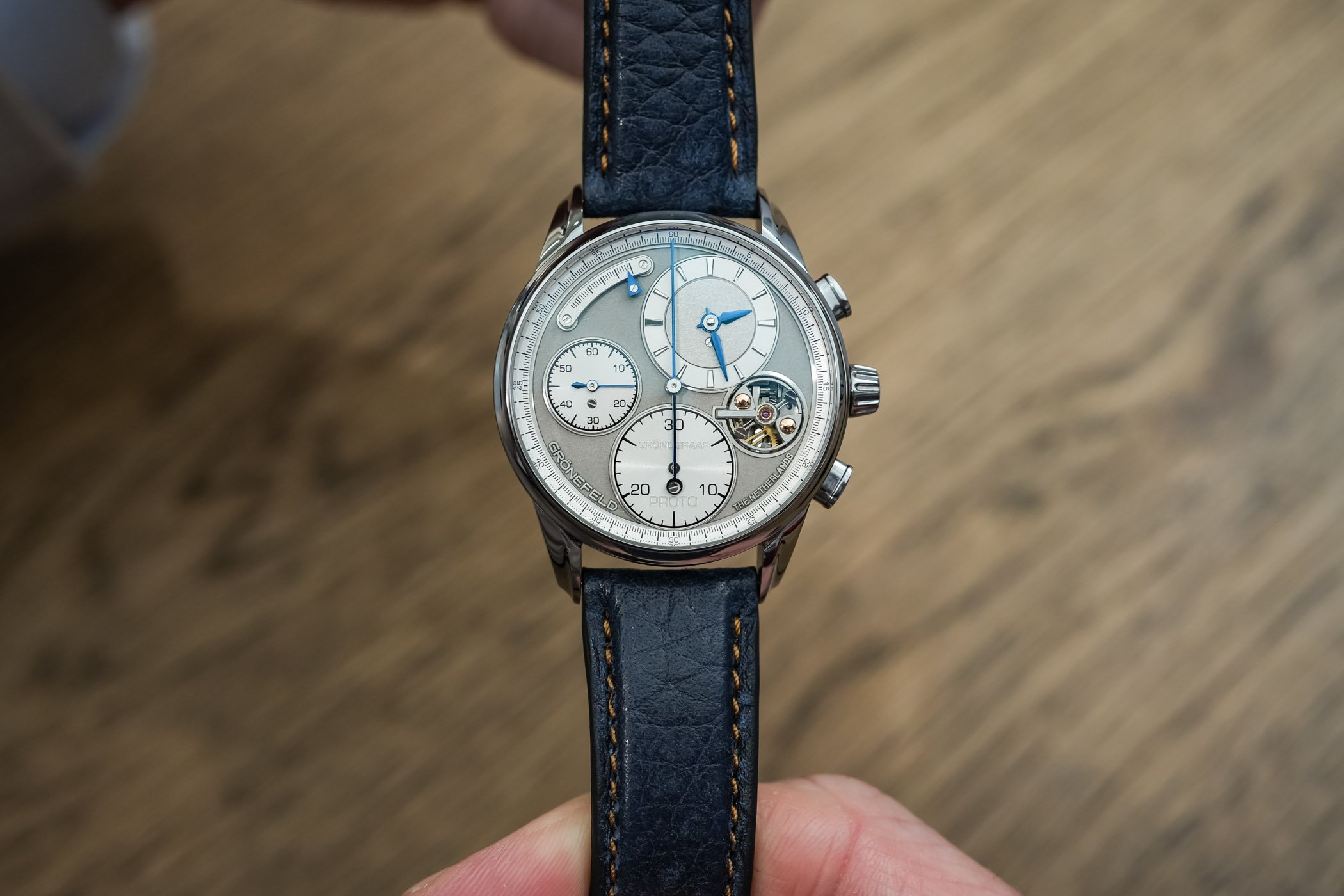
Despite the breakthrough in materials, engineering technologies and manufacturing equipment, the new millennium has yet to produce much innovation in mechanical chronograph movement design. Still, upgrades to how chronographs function occasionally impress watchmaking enthusiasts, like the MB&F Sequential EVO or the AgenGraphe by Agenhor. Much to our joy, one of the most beautifully executed attempts to perfect the beastly mechanism came in the form of the Grönefeld 1941 Grönograaf, presented by the “Horological Brothers” Tim and Bart Grönefeld last year. We recently spent time with the Dutch watchmakers and their creation and gladly share our thoughts.
Tim and Bart Grönefeld are the Horological Brothers, well-known in mechanical watchmaking for their high-end creations. They come from a family with a long watchmaking history, and both Tim and Bart have been in the industry for many years. Together, they founded their company, Grönefeld Watches, in 2008. It is based in Oldenzaal, Netherlands, producing high-end mechanical watches with unique complications and designs. Some of their most notable creations include the One Hertz, which has a unique deadbeat seconds complication, and the 1941 Remontoire, which features a constant force mechanism, or the 1941 Principia, a deceptively simply automatic watch. Their achievements have been recognized by the Jury of the Grand Prix Horlogerie De Genève, as they were awarded the Best Tourbillon prize in 2014 for the Grönefeld Parallax Tourbillon and Best Men’s Watch prize in 2016 for the Grönefeld 1941 Remontoire, and the Chronograph Watch prize in 2022 for the very 1941 Grönograaf we talk about today.
The Grönefeld 1941 Grönograaf is not your regular chronograph; the brothers made sure it does not appear as such, even though it is classical in every sense… Almost. It features a column wheel with lateral coupling, and it is also equipped with an ingenious mechanism to control the force with which the chronograph hands are reset, which adds value, and its action is a spectacle to watch continuously. Before we get to how it works, here is some background info.
A Classic Chronograph (sorry Grönograaf) with a Twist
Any column-wheel mechanical chronograph movement is a precise and complex mechanism requiring much skill and expertise to manufacture. Since its introduction in the 19th century, it has remained a first choice for high-end watchmakers due to its mechanical elegance and accuracy. It is far more expensive to make as it is more time- and labour-consuming than the cam-actuated chronograph. Look at the column wheel with tiny teeth/columns on the top side; imagine perfecting these with hand tools. Even now, these columns, with wheels produced using a modern CNC machine, will get burn marks that must be levelled off for the proper function of the mechanism. And the column wheel is a delicate component; being subjected to “influence” may cause teeth to break off. But the watchmaker’s production difficulties reward the owner aesthetically; more importantly, column-wheel-equipped chrono operation is usually smooth, and accuracy is better.
As for the mechanics, usually, when the chrono reset button is pushed, two heart-shaped cams, set on the axes of the seconds hand and a 30-minute hand, are hit by two steel hammers. The cams rotate under the pressure of the hammers until the hammers get to the recessed point of the cams, corresponding to the zero position for the hands. With a column wheel chronograph featuring a vertical clutch, the chronograph seconds hand jumps from a stopped position to zero with almost no noticeable jerk or oscillation. Still, the force with which the chronograph hands, especially the centre chronograph seconds hand, are reset is quite violent and may cause the hands to slip or bend. It’s a shock after all. To better understand the forces at play, and all things being equal, imagine hitting the brakes at full speed in a car; you will not be too far off. The Grönefeld 1941 Grönograaf solution to this possible problem is a so-called centrifugal governor, which controls the speed at which the hammers reset the hands.
Now, the centrifugal regulator or governor is not a new watchmaking invention, as it is used in chiming watches, setting the tempo at which the watch chimes. An exciting development of the centrifugal chiming regulator can be seen in Vacheron’s Calibre 2755 and Patek’s Calibre GS 36-750 PS IRM. While at it, check out the Seiko Credor Minute Repeater, which employs another approach to regulating the speed of the chimes. But I digress.
The 1941 Grönograaf’s centrifugal governor with two solid gold weights is positioned dial-side at 3 o’clock; you cannot miss it. Its function is to slow down the speed of the chronograph’s reset, thus reducing stress on the movement’s components. Instead of a frantic jump, the central second hand gracefully, in a royal fashion, returns to its start position, with the regulator rotating in support. The chronograph minutes hand at 6 o’clock, however, will perform the instant jump, as if to not distract from enjoying the solo seconds hand performance. And depending on the position of the heart-shaped cams for the counter hands, the hands will rotate left or right during the “reset” show. The way, or rather the visual performance is ballet-elegant and aesthetically pleasing; watch the video below to understand.
The show is the result of the governor’s wheel rotation due to centrifugal force when the reset button is pushed, with the two parts coming into contact with the inner walls of the barrel housing the governor, and the friction and centrifugal force determine the speed, as the energy from fast-moving chronograph hands is transferred to the spinning gold weights, allowing a softer, slower reset of hands.
Another exciting part of the soft-reset system is witnessed movement-side. Grönefeld has replaced the flat hardened steel hammers’ ends with two ruby rollers, which provide the necessary pressure but with reduced friction. Form and function, nice!
Visually typical Grönefeld
The animated spectacle is just one of the things to admire about the Grönefeld 1941 Grönograaf. A detailed tour of the dial is worth your time. Moving right to the left, starting with the off-centre hour-and-minute subdial at 1 o’clock for reading the time. This design detail is borrowed from the Parallax tourbillon, but before that first appeared on the 1896 One Hertz model. The Lancette hands are crafted from steel, flame-blued and mirror-polished, and the geometric hour indices provide good legibility. To the left, the arc of the 53-hour power reserve scale is attached to the dial base with two screws, and the blue “floating” arrowhead moving along the scale will show how much energy you have left or whether it is time to wind your watch.
Further left and down, at 9’o clock, there is a running seconds subdial, with the chronograph’s 30-minute counter with a Breguet-style hand at 6 o’clock. Strikingly blue chronograph central hand dominates the stainless steel base with rhodium-plated sub-dials and elements decorated with frosted and satin-grained finishes. The Grönefeld text logo and “The Netherlands” mark the watch’s origin, and the Grönograaf name appears on the 30-minute counter’s upper part, with the limited edition number stated at the bottom. The raised ring of the minutes and seconds track on the dial’s periphery ensures every second counts. Domed sapphire crystal with antireflective coating on both sides will protect from glare, and the case construction will protect from water getting in at 3 ATMs.
The G-04 Grönefeld movement (visible through the flat sapphire crystal with anti-reflective coating on both sides) is to dive into. This calibre is a work of horological art, built from 408 components, with 45 jewels partially set in gold chatons, with signature stainless steel bridges, their bevels polished by hand. The central long, thin, arrow-shaped bridge is a beauty, and the G-04 is short of being the best-looking chronograph calibre out there today. If money is not an issue, rush to order Grönefeld 1941 Grönograaf. There is, however, a tiny problem. The ‘Premiere Edition’ of the 1941 Grönograaf in a 40mm revisited “1941” case in tantalum was limited to just 25 pieces and already sold out. The 188 pieces in stainless steel, announced by Grönefeld to follow the Grönograaf inaugural series, is marked as a “temporary order stop”, so there is no good news here, too.
So, what’s the point of revisiting the subject we once spoke about? Well, there are those out there who are lucky, and timepieces like the Grönograaf are a reference point, no matter what your or mine budgets are. Once we know what to pay attention to and what to look for to understand better and appreciate mechanical watchmaking, we are better equipped with relevant knowledge to make an educated purchase. The Grönefeld brothers keep the spirit of Haute Horlogerie alive. The Grönefelds addressed the two-centuries-old chronograph problem of the reset shock and strived to eliminate wear and stress to the movement’s components and provided an elegant solution which to my humble knowledge was never offered in a chronograph before. And it is a great watch, which looks fantastic, is finished in a stunning way and wears comfortable, so we were happy to mention the 1941 Grönograaf anytime.
To learn more, please visit www.gronefeld.com.




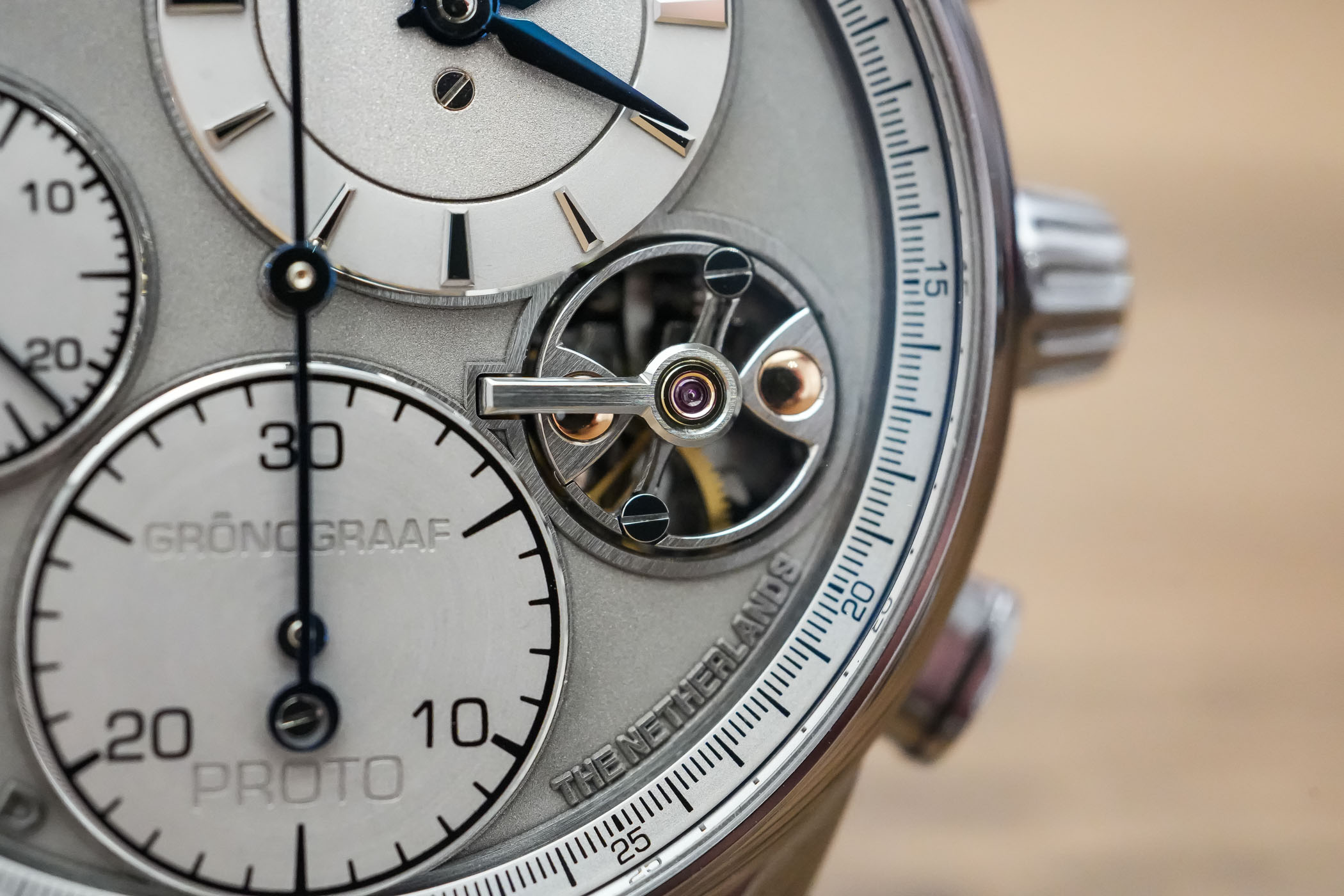
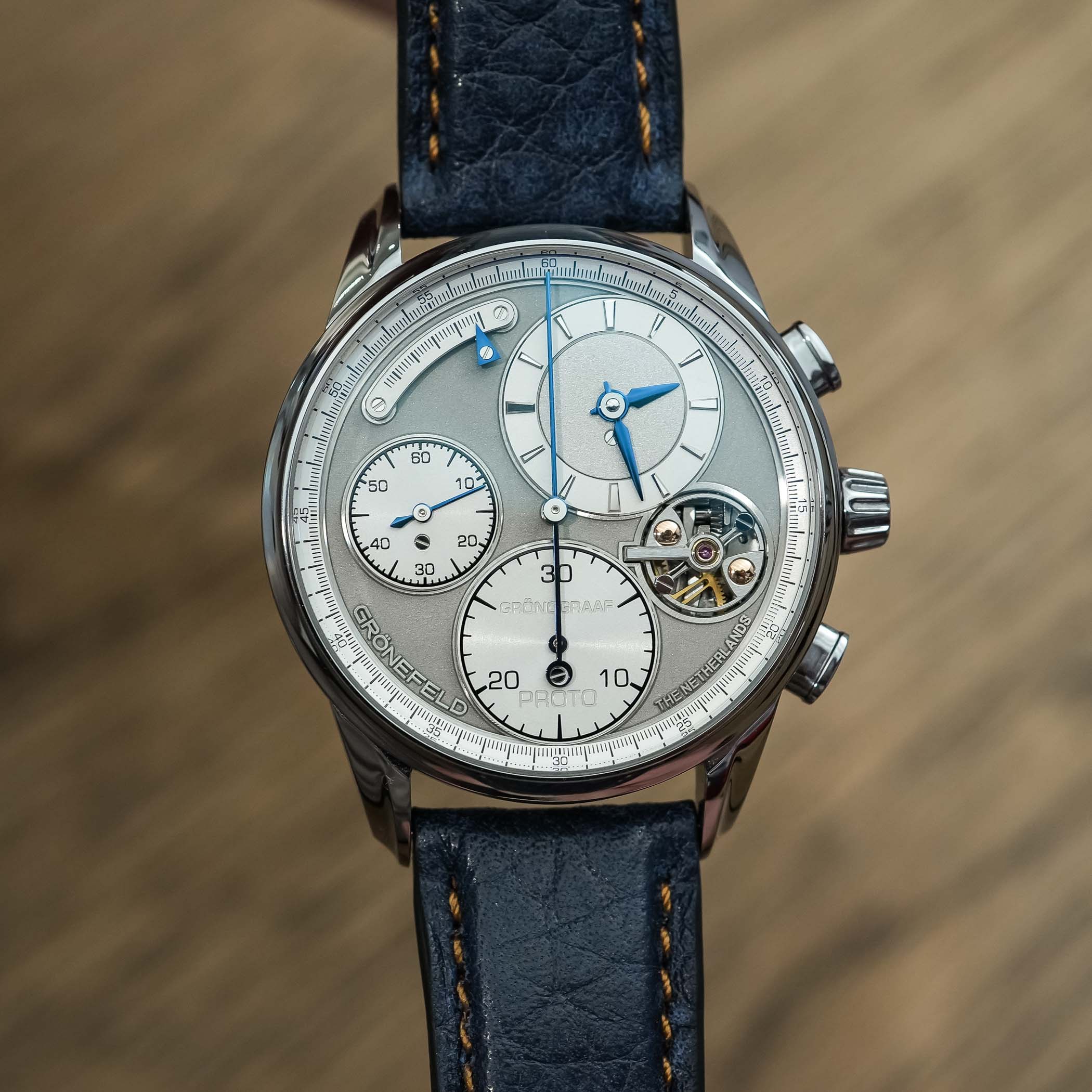

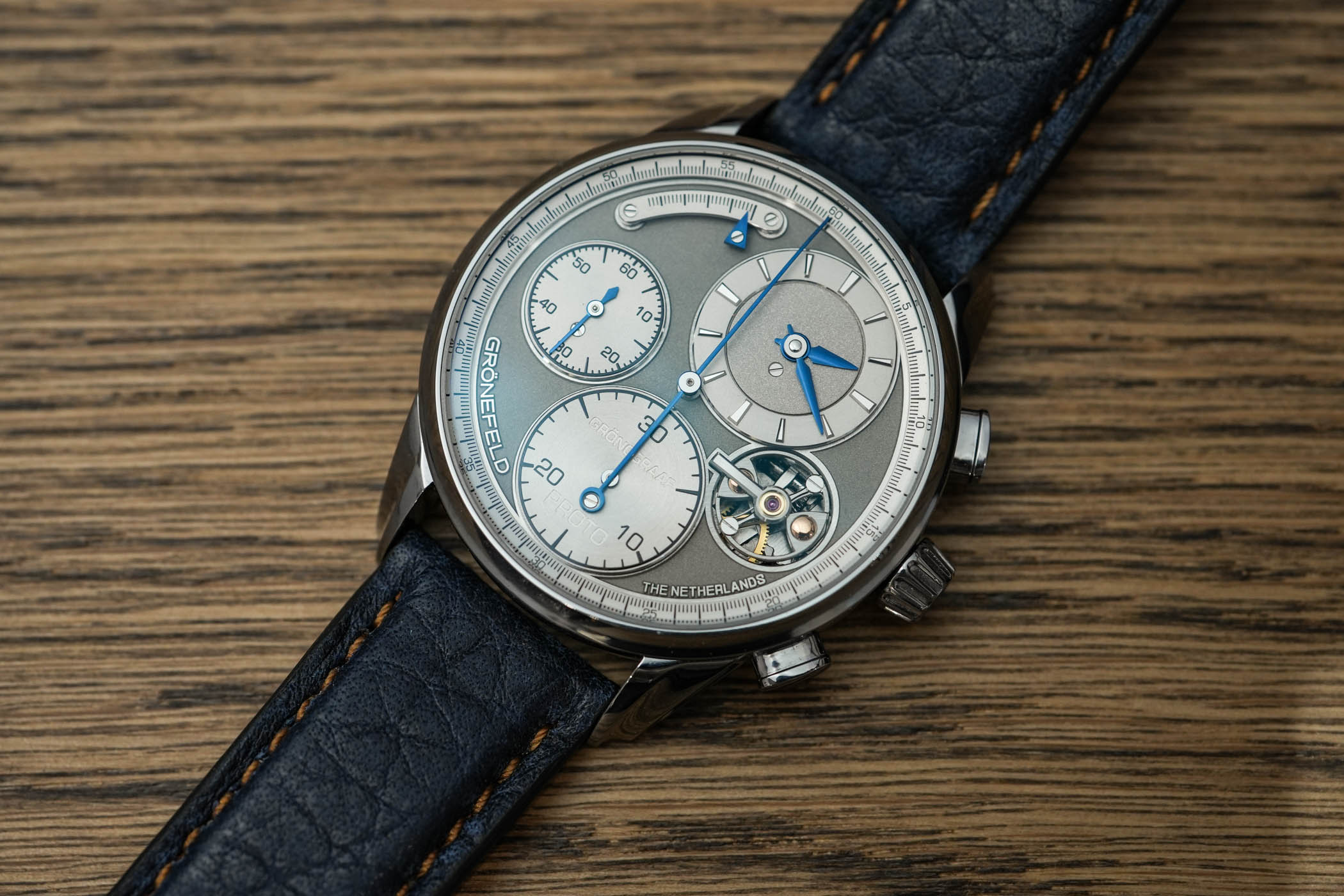
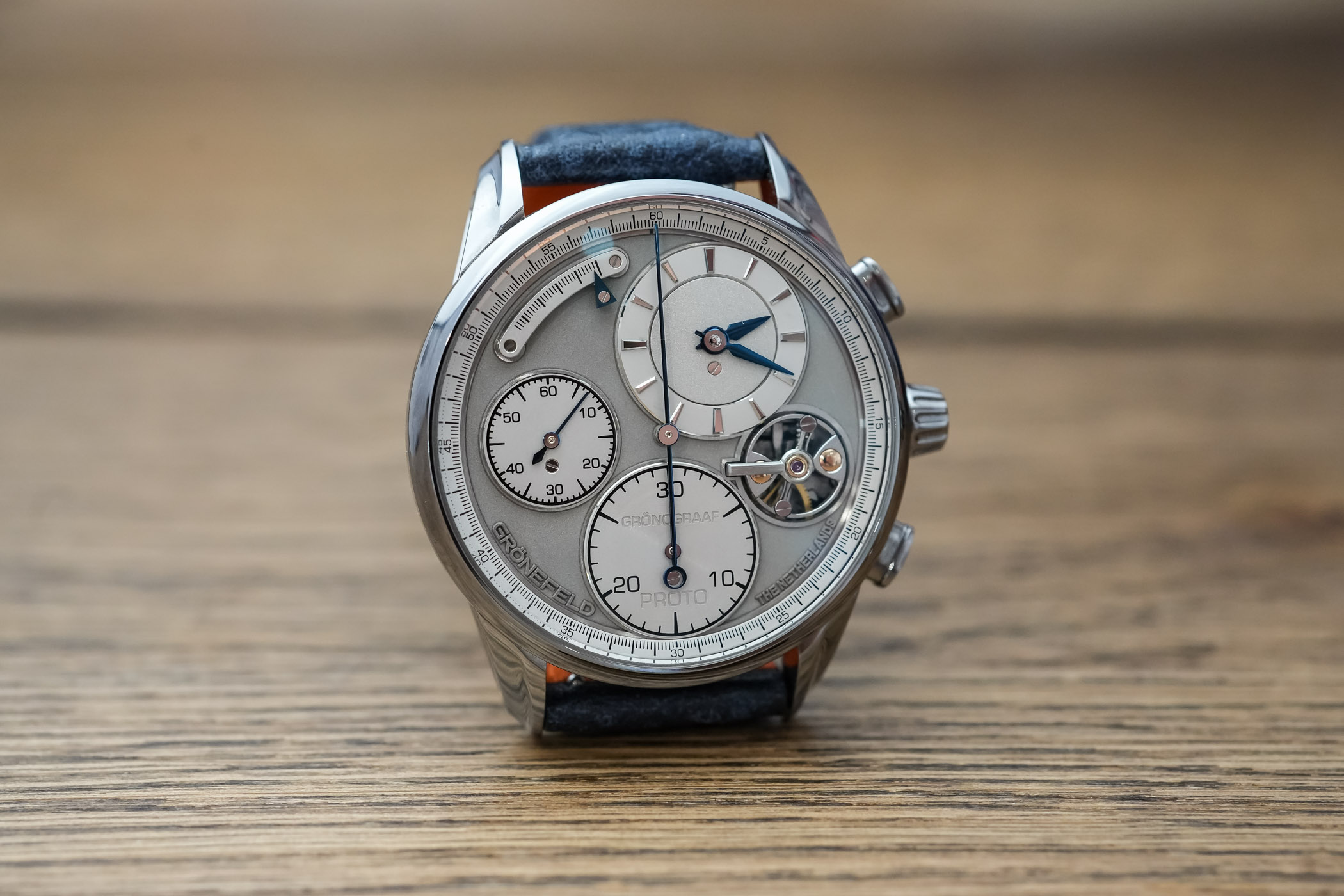
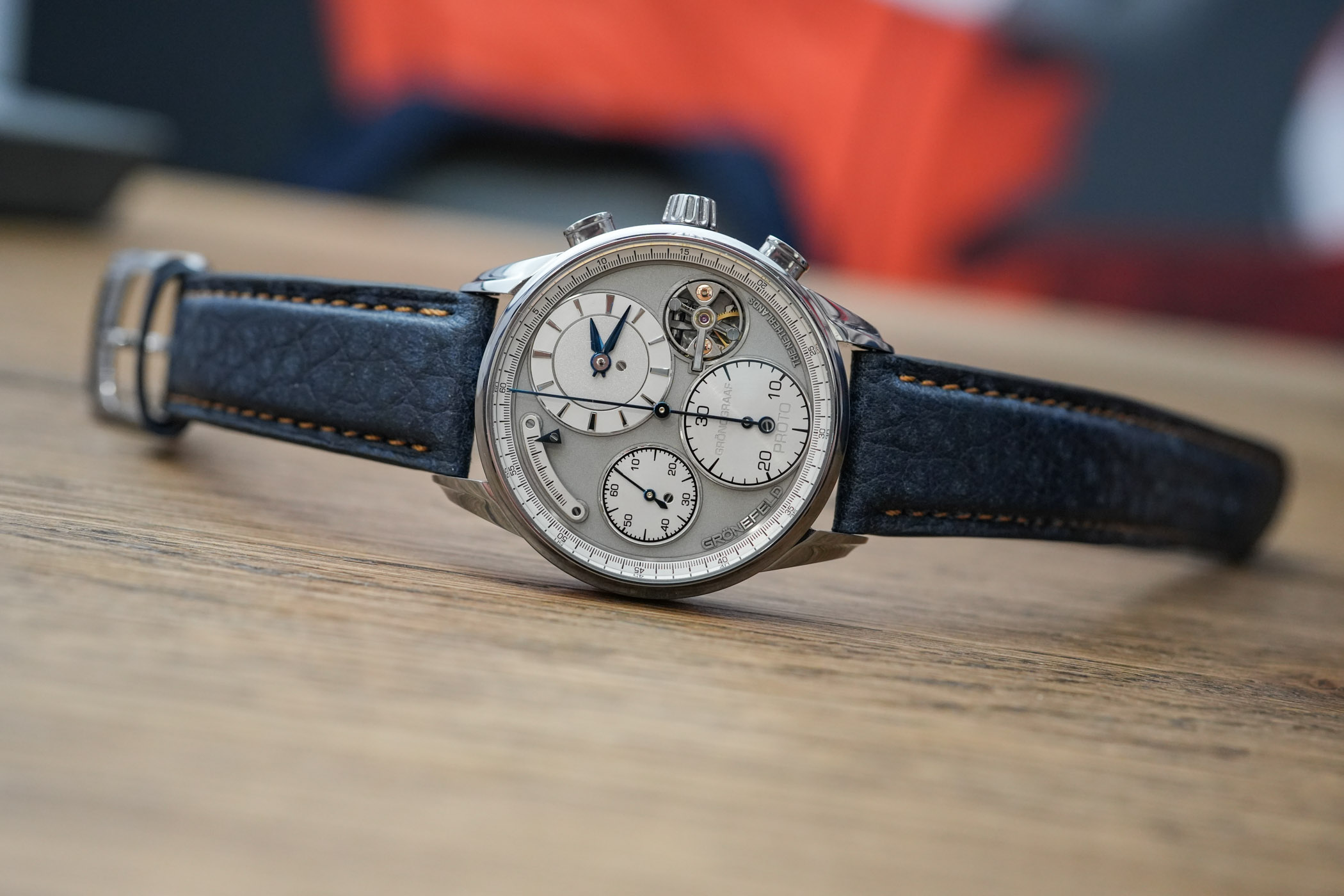
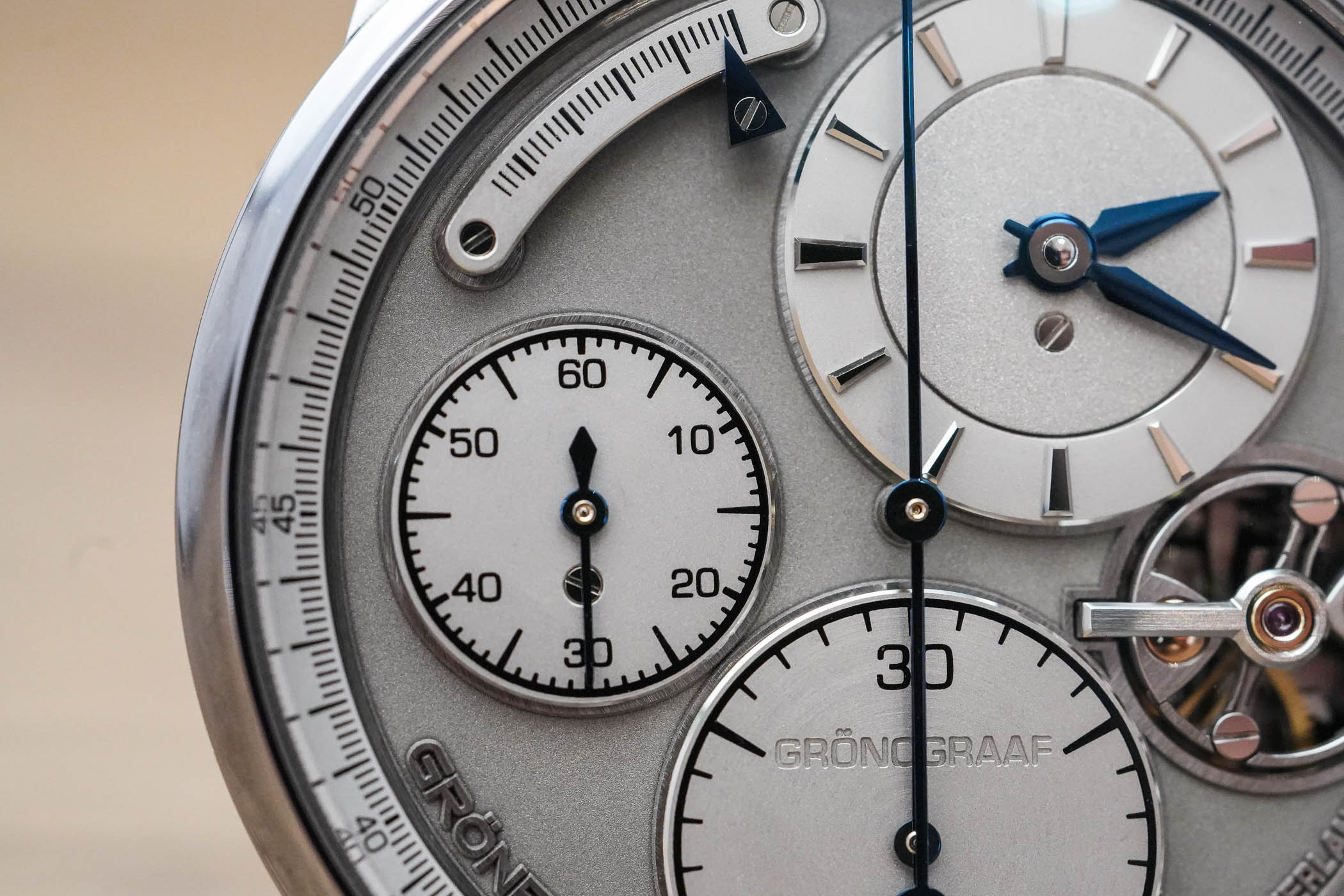
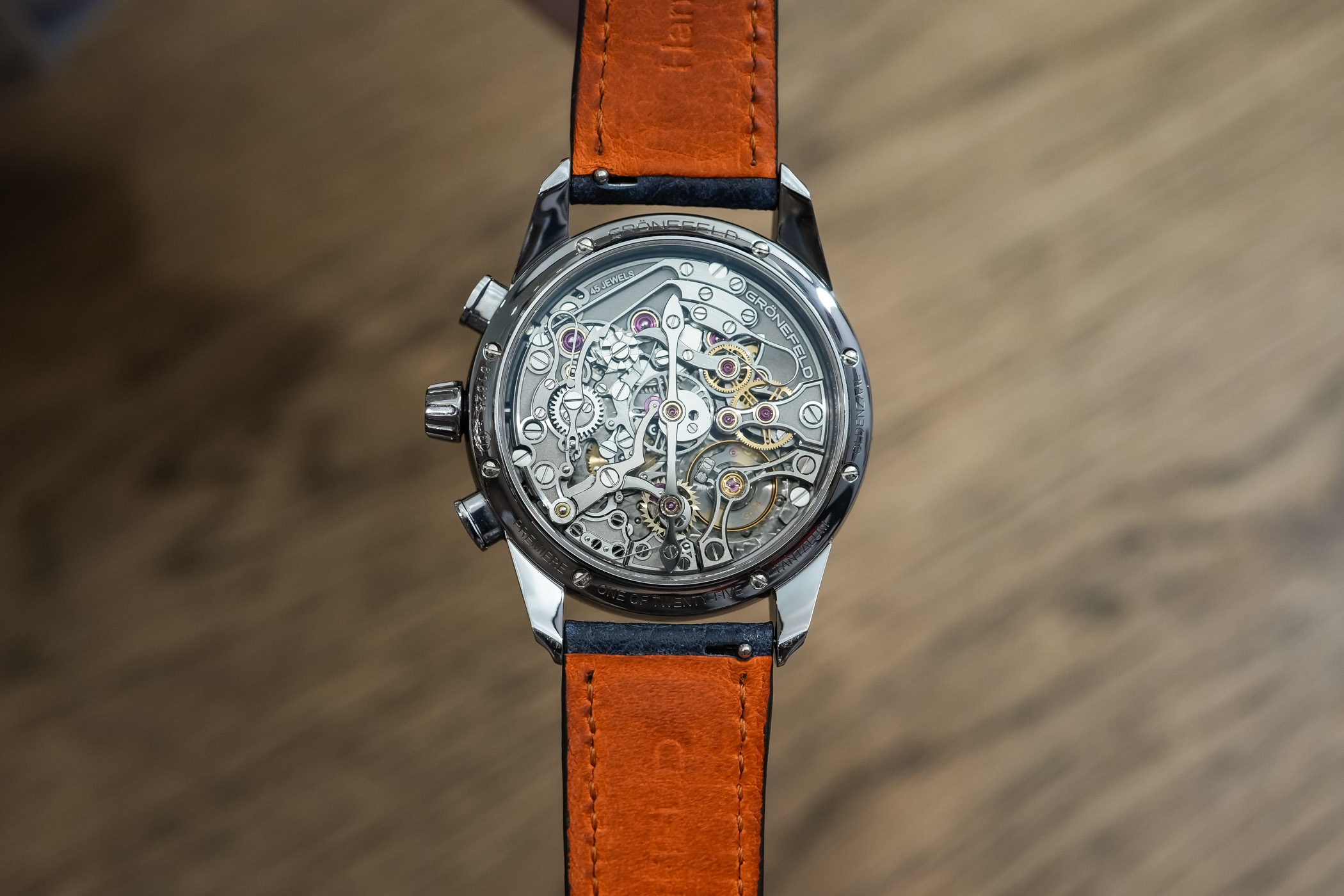
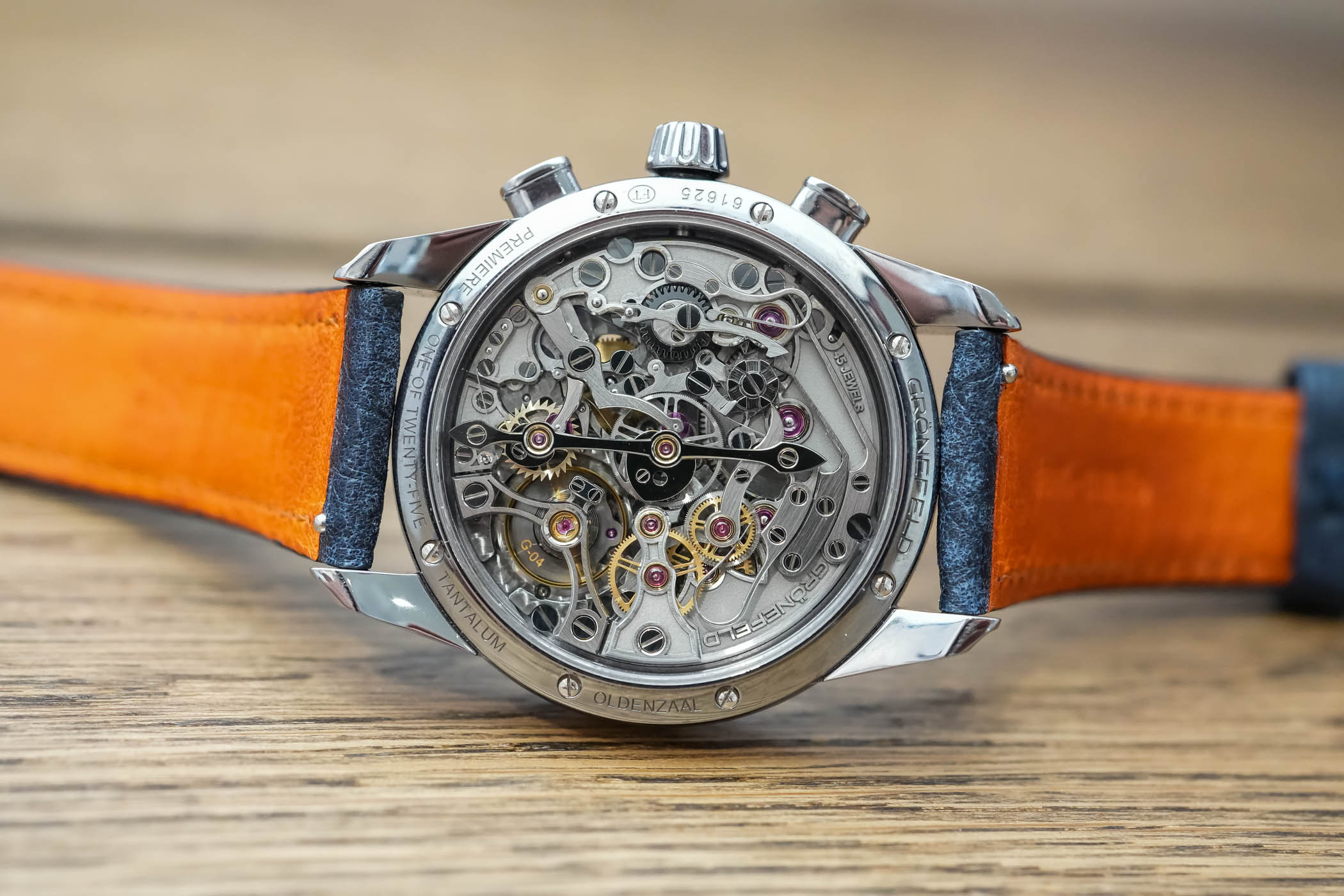

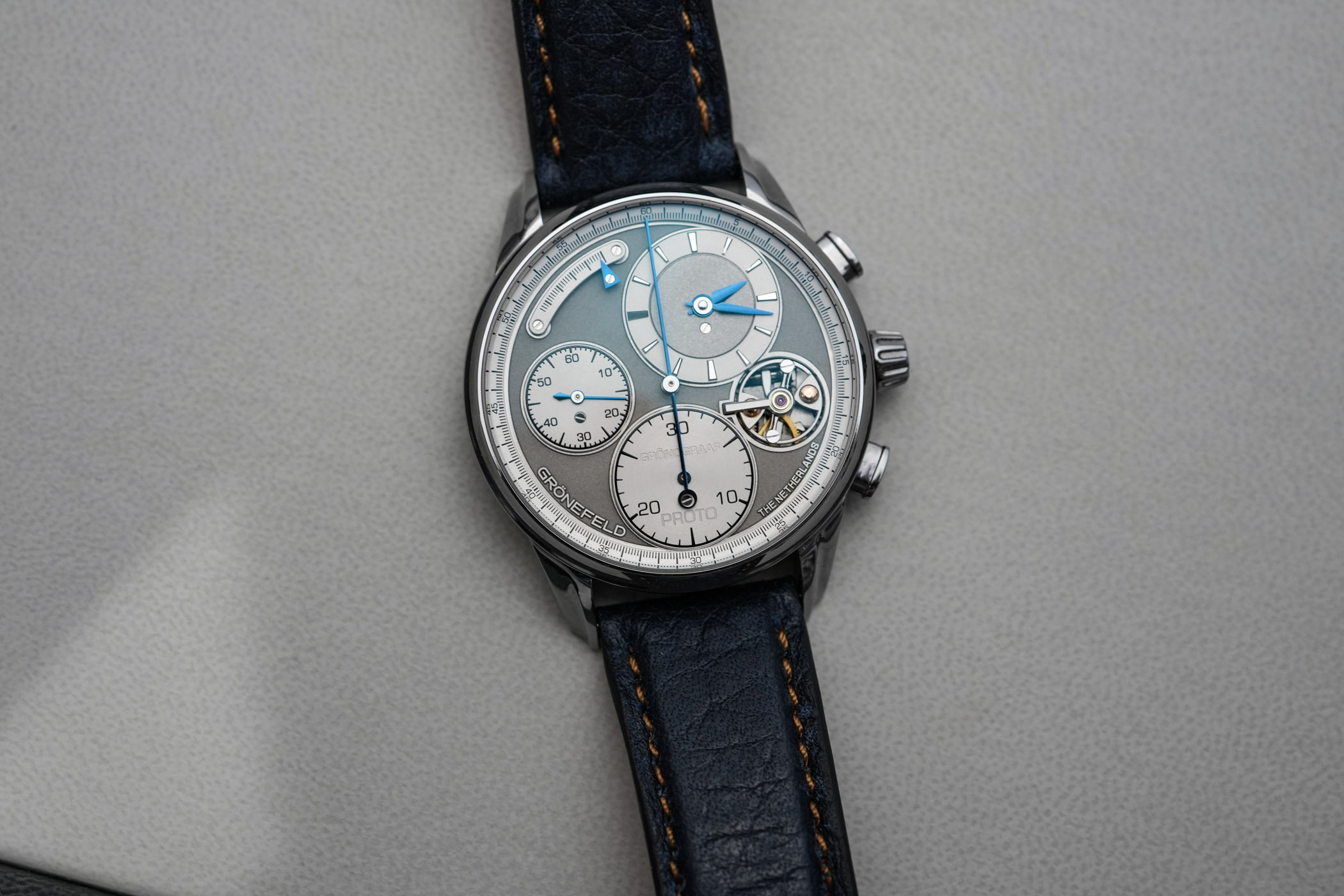



3 responses
So these guys make 30 million by selling a few kilo’s of steel?
Blimey, they must have worked hard to arrange such a messy front side.
Messy front side?? Few kilos of steel?? Do these guys know anything about high horology??
Masterpiece…